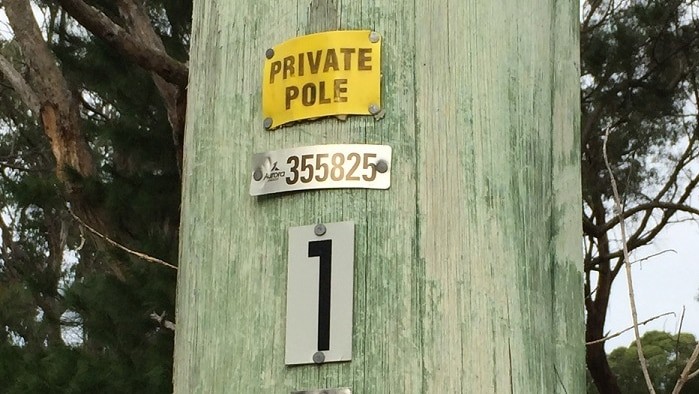Private electrical infrastructure
If you have any private electrical assets, it’s your responsibility to maintain them in safe working order, fix any defects and keep trees or branches clear. This is to ensure reliable power supply and reduce the risk of electrocution or bushfires.
Identifying private assets
If you have private poles on your property, they will be marked with the a 'private pole' label approximately 1.5m from the base of the pole.
Generally, private electrical infrastructure begins from the first pole on your property and includes any lines, poles and electrical equipment beyond the first pole.
If you are unsure whether some electrical infrastructure on your property is private, please contact us.

What you need to do
In order to maintain your private electrical assets in safe working order, you need to:
- Carry out regular weed and bush removal around the base of any private poles.
- Keep vegetation a minimum of 3 metres clear from overhead powerlines. Vegetation management should only be undertaken by an authorised contractor who can work in close proximity to powerlines.
- Look for any problems relating to the pole such as significant leaning, nuts and bolts missing, steelwork hanging loosely, wires too close to the ground or broken insulators and wires. If you notice any of the above, you need to contact an authorised contractor for repairs immediately.
Live electrical infrastructure can be extremely dangerous. Please be careful when working near your private assets.
Private Powerline Contractors
If you need any work done on your private assets, this work should be undertaken by an authorised contractor.
Find a list of authorised contractors on the Consumer, Building and Occupational Services website here.
What we do
TasNetworks will inspect any private poles on your property on a five yearly cycle. If we find any safety issues during our inspection, the Department of Justice will notify you and explain what maintenance needs to be carried out.


